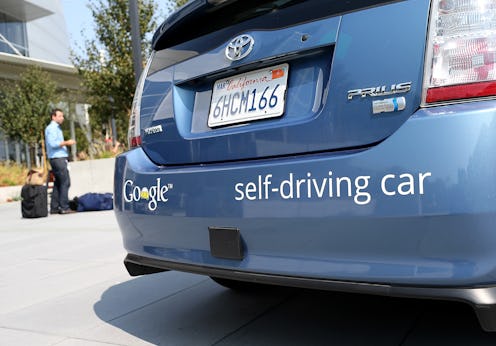News
Of Course Self-Driving Cars Are A Thing Now
Tuesday saw a sneak peek of Google's self-driving car — and along with being the harbinger of the robot apocalypse, it's a pretty cool piece of technology. Google gave a bunch of techie journalists the chance to take a ride in its very cool fleet of self-driving cars, many of which are retrofitted into tricked-out Lexuses. The cars have a large camera system that sits on the roof, as well as a bunch of other cameras and sensors. One problem: It can't drive in the rain. Or do a bunch of other things.
The car uses LIDAR (Light Detection And Ranging) technology, which is basically laser radar, to figure out what's around it and constantly evaluate the road to determine its speed and direction. The LIDAR system costs about $70,000 per car, but this would likely go down if the system were developed for the market.
If you've ever been on a highway, you know most people would (unfortunately) rather spend time in their cars texting, Tweeting, jamming, and generally doing anything other than paying attention to the road — and Google's car could help make that an actually safe way to behave. But though the car's come a long way in its development, it will be years before the cars will be in showrooms and ready for your cross-country road trip, Re/Code reports.
Still, here's everything it doesn't know how to do yet.
1. Drive in Snow
Like southerners, Google's self-driving car has never driven in snow, doesn't know how to drive in snow, and probably would rather not drive in snow.
2. Drive anywhere but Mountain View, California
Though Google's testing the cars in other markets, like most of us, it's really best at driving in its hometown, which Google has mapped out extensively.
3. Drive in Heavy Rain
Yeah, heavy rain stumps it. And it's about as good as you are at driving in really foggy weather. Meaning not very good.
4. Drive without a Person Behind the Wheel
Right now, despite being called a "driverless" car, there are some situations where the car will ask a human to take the wheel, like in heavy rain. The goal is that one day, there's no situation that would faze the robot car, when you'll be able to curl up in the backseat on a road trip while your car still safely rumbles onto your destination. I call that day the carpocalypse.
